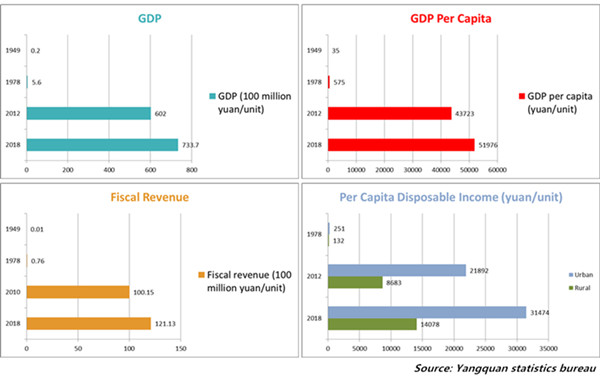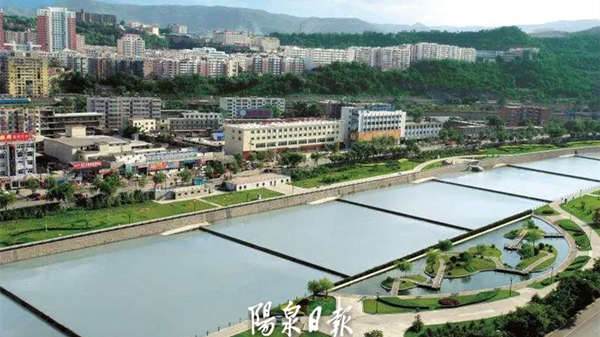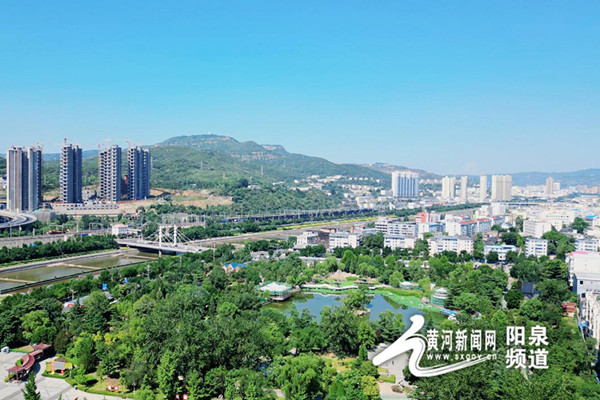Yangquan booms over seven decades

A figure for economic and social statistics of Yangquan city [Photo/chinadaily.com.cn]
Yangquan city in central Shanxi province has seen dramatic changes since the People's Republic of China was founded in 1949.
The per capita GDP of the city has risen to 51,976 yuan ($7329) in 2018 from 35 yuan in 1949 and the urbanization rate has increased to 68.49 percent from 15.34 percent over the same period.
At the same time, Yangquan has been developing a modern industrial system consisting of traditional and emerging industries.
To upgrade its traditional industries, Yangquan has cut 4.75 million tons of coal production overcapacity and extended its coal industrial chain with the advanced coal production capacity accounting for 68.7 percent of present day total coal production capacity.
As for emerging industries, the city has focused on incubating new-generation information technology, new materials, modern logistics, cultural tourism and the health care sectors.
The local government has rolled out 11 provincial policies targeting development of the city as an intelligent internet of things applications base and has worked with internet giant Baidu on urban construction, based on artificial intelligence technology.
Currently, non-coal industries account for around 35 percent of total GDP and last year contributed 5.9 percentage points more than coal industry to GDP. Emerging industries last year accounted for 21.6 percent of all industries in the city.
Yangquan has also furthered reforms and promoted innovation in a number of its systems. The reform of local State-owned enterprises has been accelerated and the city has been listed as one of pilot cities for reform of national rural collective property rights.
The city has been working to build itself as a demonstration zone for coordinated development of urban and rural areas, with a raft of plans drawn up.
A series of urban infrastructure and public service facilities, such as the Yangquan-Dazhai Railway and national highway 307, are under construction.
Special funds for rural revitalization have been set up to boost rural development. Several villages in Yangquan have been rated as provincial, beautiful livable demonstration villages. Industries featuring rural characteristics, such as agri-tourism, have been boosted by the local government.
For years, Yangquan has been committed to building an eco-friendly home for local residents, officials said.
Efforts have been made to promote the clean and efficient use of coal and to optimize its energy structure to achieve green production.
Polluted water treatment, supervision of soil pollution sources and control of polluted gas emissions have bettered the city's environment.
In 2018, the city's comprehensive air quality index averaged 6.58 and the proportion of clean surface water was 80 percent. The city's forest coverage rate has now reached over 28 percent.
Officials said Yangquan is aiming to improve its residents' standard of living. Spending on related projects accounted for 80.73 percent of the general public budget expenditure last year and the urban registered unemployment rate was just 3.07 percent in 2018.
Renovation work on a total of 5,143 dilapidated residential buildings started in the same year, ranking it first in the province in terms of numbers.
The city has also taken the lead in the province to alleviate poverty. Various indicators -- including those on urban and rural subsistence allowances -- have been at the forefront of cities in Shanxi in recent years.





